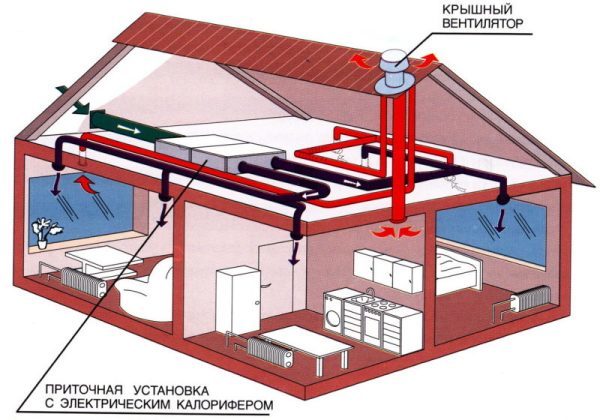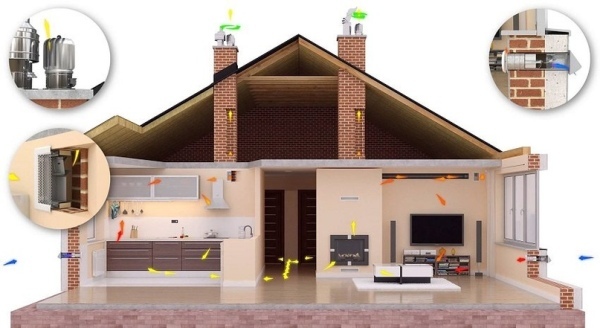Content
- 1 How can i do
- 2 Natural ventilation in winter causes large heat losses
- 3 Ways of rational ventilation
To create proper ventilation, you need to compare weather conditions with the mode of life in the building. The article is devoted to creating the best ventilation option for your home for the winter or summer.

How can i do
Ventilation is necessary in order to remove stale air and excess moisture from the house. Thus, three options for arranging ventilation can be implemented in your home:
- Natural exhaust, where the exchange of exhaust and clean air occurs through cracks in windows and doors;
- Mechanical ventilation system with fans;
- A mixed system where the first option is combined with the second.
The implementation of each of the options should carry with it accurate calculations and design. But if you can ventilate in the air without heat loss, then in winter such omissions are critical.

Natural ventilation in winter causes large heat losses
The simplest ventilation option is the natural option, without additional equipment, which can significantly save the time and effort of the builder. But in the winter, its drawback is that air exchange is greatly increased. From a sharp temperature difference outside and inside, heat quickly leaves the house.

In winter, natural ventilation takes with it up to 40% of the heat and the cost of central heating becomes higher. And uncontrolled ventilation of the underground, if we are talking about a private house, takes away 20% of warm air. Do not forget about the attic, which in winter, with poor ventilation, also takes heat.

Ways of rational ventilation
Combined ventilation and ventilation is the most profitable solution in a private house for the Russian regions. In summer, natural ventilation is left when the air flow spontaneously occurs, and the outflow is carried out through the hood. And winter air exchange will consist in connecting additional elements: supply and exhaust fans, filter modules, recuperators and automation.

An alternative is a soil heat exchanger. The design is installed in such a way that air from the street enters the house through it. The device is placed in the ground above the freezing level. Cold air rising through the device is warmed by the heat of the earth. This reduces the energy consumption for heating cold rooms.



-
 Are there any benefits from energy-saving lamps and what
Are there any benefits from energy-saving lamps and what
-
 What kind of people make mistakes when choosing the sizes of a shower cabin
What kind of people make mistakes when choosing the sizes of a shower cabin
-
 What to do if neighbors make noise from above
What to do if neighbors make noise from above
-
 What types of lamps are much better than LED
What types of lamps are much better than LED
-
 Should I make a combined bathroom
Should I make a combined bathroom
-
 What lights are not suitable for a stretch ceiling
What lights are not suitable for a stretch ceiling
-
 Where you can not apply glazing from soft PVC sheets
Where you can not apply glazing from soft PVC sheets
-
 What is the optimal thickness of the substrate for the laminate
What is the optimal thickness of the substrate for the laminate
-
 Built-in dishwashers
Built-in dishwashers
-
 What problems does the thermostat have for a heating system
What problems does the thermostat have for a heating system
-
 The weaknesses of cheap food: how to extend the life
The weaknesses of cheap food: how to extend the life
-
 Floor vases in the interior
Floor vases in the interior
New publications are published daily on our channel in Yandex. Zen
Go to Yandex. Zen


